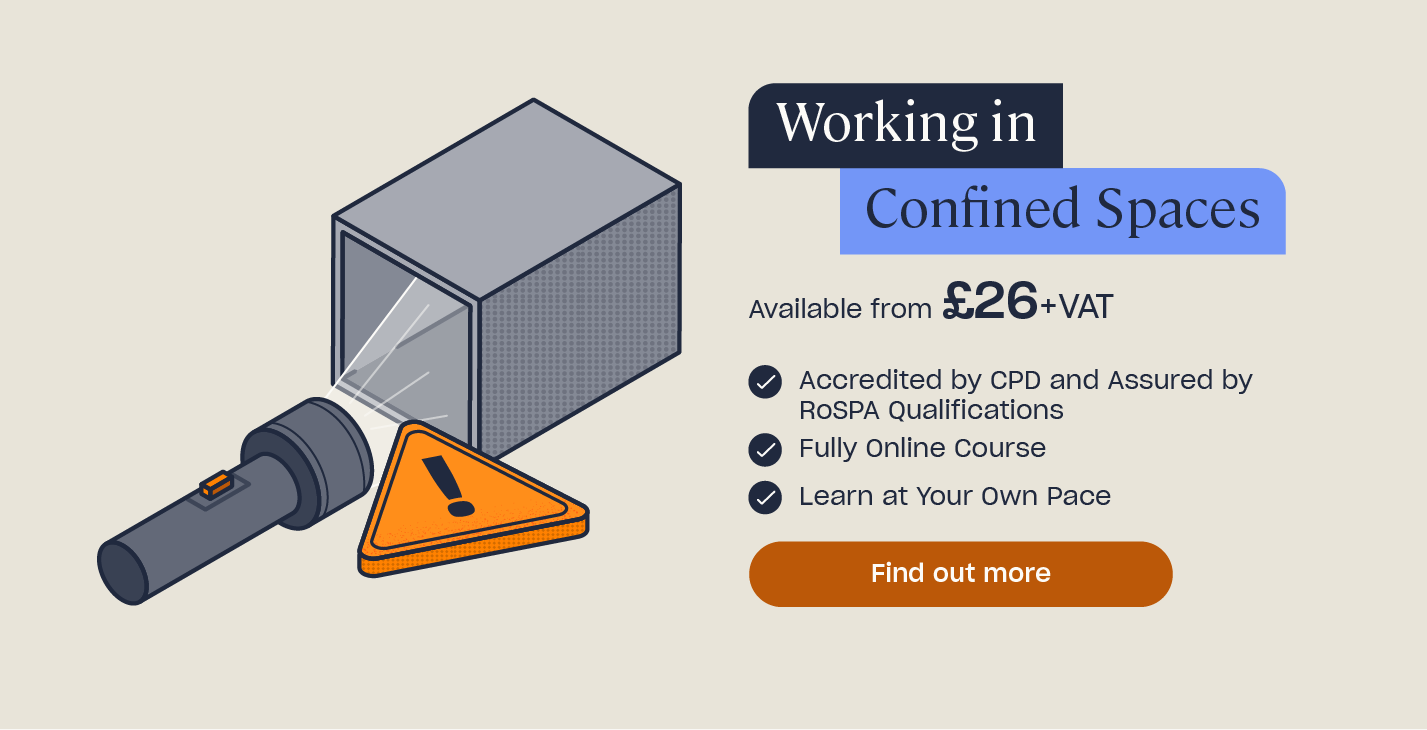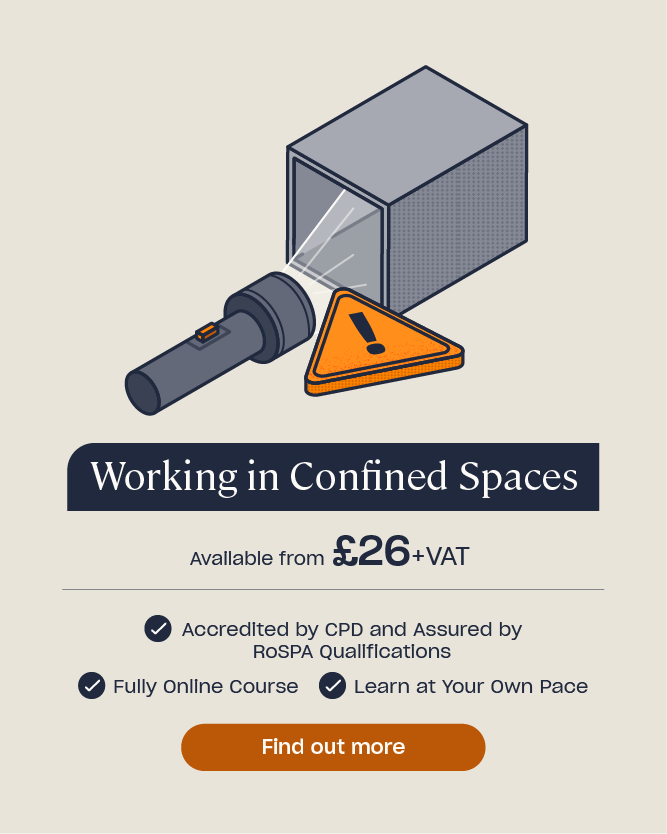What are the Requirements for Working in Confined Spaces?
Where work in confined spaces is not planned, managed and carried out safely, in accordance with the law, there can be serious and potentially fatal consequences. Therefore, it’s essential that those involved in working in confined spaces have an understanding of the general duties placed on them. There are several pieces of legislation that regulate work in confined spaces, and this article will provide an overview of these and briefly discuss the duties and responsibilities set out by them.
What are Confined Spaces?
Under the Confined Spaces Regulations 1997, for a space to be defined as a ‘confined space’ it must have both of the following characteristics present. These characteristics are:
- The space must be substantially (though not always entirely) enclosed.
- One or more of the ‘specified risks’ must be present or reasonably foreseeable. These are defined by the Confined Spaces Regulations and will be discussed further below.
Examples of Confined Spaces
Some examples of confined spaces include:
- Manholes, shafts and tunnels.
- Sumps and inspection pits.
- Silos and storage vessels.
- Interiors of vehicles, such as closed vans.
- Cold storage rooms or other food preservation rooms.
This is not an exhaustive list. It’s important to note that a confined space does not always always fit the image that springs to mind when hearing the term. Confined spaces can be any size, they can be easy or difficult to get in and out of, and they can be completely or partly enclosed – however, in order to be considered ‘confined’ they must have both of the defining characteristics outlined above.
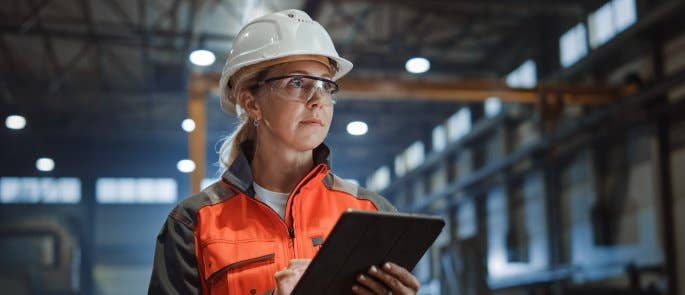
Legislation Regulating Work in Confined Spaces
The main pieces of legislation that regulate work in confined spaces are:
- The Health and Safety at Work (HSW), etc. Act 1974.
- The Management of Health and Safety at Work Regulations (MHSWR) 1999.
- The Confined Spaces Regulations 1997.
The Health and Safety at Work (HSW), etc. Act 1974.
This is the primary legislation governing health and safety at work in the UK. Under this Act, employers must ensure the health, safety and welfare of their employees while they are at work, so far as is reasonably practicable. This duty is wide-ranging, and covers the prevention and control of risks arising from working in confined spaces, including ensuring the work is properly planned, organised, controlled, monitored and reviewed.
Employers must carry out their work activities in a way that does not affect the health and safety of others in the vicinity, such as members of the public.
Under the Act, duties are also placed on anyone who has any extent of control over any premises – such as employers who own or rent premises for which they are responsible, as well as anyone else who has any extent of control over any part of the premises, such as landlords or owners.
It’s important to understand that employers are required to ensure the safety of others affected by their work activities, such as contractors. Where contractors are required to enter confined spaces on their premises, there are duties placed on both the employer and the contractor to ensure that the work can be undertaken safely.
Further key duties are placed on designers, manufacturers, suppliers and importers of articles and substances for use at work. The dutyholder is required to ensure that all equipment and plant provided is safe and accompanied by information and instructions on its safe use and maintenance.
The Management of Health and Safety at Work (MHSW) Regulations 1999.
This legislation places further legal duties on employers to manage health and safety in the workplace and applies to all work activities. Under the Regulations, employers must:
- Ensure a risk assessment is carried out and kept up to date. Employers must ensure that the hazards and risks associated with their work activities are identified and appropriately controlled. It is a legal requirement to record the risk assessment when there are five or more employees, however, it’s good practice for organisations of any size to do so. The risk assessment should be reviewed at least annually, however more frequent reviews may be needed where circumstances of the work activities or work environment change. The person who carries out the risk assessment must be competent – this means they must have the skills, knowledge and experience of the work and equipment to be used, so that they understand the risks involved with the work activity and what precautions and safe systems of work will be required. In practice, managers and supervisors experienced in confined spaces work would have the competence required to undertake the risk assessment process, with specialist help where necessary.
- Provide health surveillance, where necessary.
- Provide workers with the necessary information, instruction and training required to ensure they can undertake their roles safely and effectively.
In addition, employers and the self-employed that are in control of a premises and engaging the work of any outside organisation, such as contractors, must ensure that they provide the employer of the outside organisation with clear information on the hazards and risks associated with their work activities and work environment.
This includes providing information on the nature and risks of any confined spaces that are present or could be present on the premises, as well as the precautions to be followed. This should begin with the prohibition of entry to the confined space(s), unless entry has been specifically agreed and is covered by a suitable and sufficient risk assessment and written safe system of work.
Guidance on The Confined Spaces Regulations 1997
The Confined Spaces Regulations apply where there is an identified risk of serious injury resulting from work in confined spaces. Note that these Regulations apply in addition to the duties set out under the HSW Act and the MHSW Regulations.
As mentioned above, confined spaces are defined by the Regulations as being a space that is substantially (though not always entirely) enclosed, where one or more of the ‘specified risks’ is present or reasonably foreseeable. These ‘specified risks’ are set out by the Regulations. They are:
- Serious injury arising from fire and/or explosion caused by flammable substances (liquid, solid or gas) or by enrichment of the atmosphere by oxygen leading to enhanced risk of fire.
- Loss of consciousness caused by an increase in body temperature due to excessive heat.
- Loss of consciousness or asphyxiation caused by gas, fume or vapour.
- Loss of consciousness caused by oxygen deficiency occurring where the level of oxygen in the air is reduced to a dangerous level.
- Drowning caused by liquids entering the confined space.
- Asphyxiation, or becoming trapped and unable to reach a respirable environment, by free-flowing solids such as grain, sand or other free-flowing materials.
You should note that some spaces can become ‘confined’ if the conditions change. For example, if the degree of enclosure is changed or there is another change that introduces the presence or foreseeable risk of one of the specified risks. This also applies in the reverse; so a space may no longer be considered ‘confined’ if the source of any present or foreseeable ‘specified risks’ is removed or the degree of enclosure is reduced.
The Confined Space Regulations are supported by an Approved Code of Practice (ACoP), aimed at those who plan and manage the work in confined spaces, and is designed to support them to apply the Regulations to their work activities.
Employers and the self-employed must ensure that the work carried out under their control is in compliance with the requirements outlined by the Confined Spaces Regulations. This includes ensuring, so far as is reasonably practicable, that anyone else undertaking work under their control does so in compliance with the Regulations, for example contractors. They must ensure that anyone entering a confined space under their control is fully protected in the same way as their employees or themselves.
Employers who hire contractors for entry and work in confined spaces must take all reasonably practicable steps to ensure that the contractor and their employees are competent in their duties.
Under the Confined Spaces Regulations, employers and the self-employed must always, in the first instance, consider if entry to a confined space can be avoided, so far as is reasonably practicable. Ways to avoid entry into a confined space include using remote visual inspections and remote atmospheric sampling. Where avoiding entry is not reasonably practicable, dutyholders must ensure effective safe systems of work are enforced and used and that any work being carried out is done so safely.
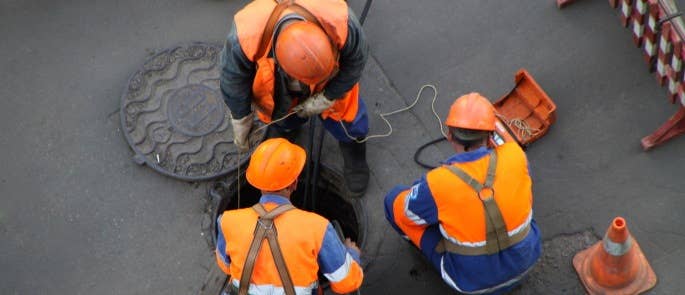
Safe Systems of Work
A safe system of work should provide a written description of the work to be carried out and the precautions to be enforced. The main factors to be considered in a safe system of work are:
- Supervisory arrangements.
- The competency requirements for individuals involved in the work.
- Methods of communication.
- Atmospheric testing and monitoring.
- Cleaning of the confined space, including purging and removal of residues.
- Ventilation, including mechanical and local exhaust ventilation (LEV).
- Isolation of adjacent plant.
- Selection and use of suitable equipment.
- Any requirements for PPE and RPE.
- Safe means of access and egress and safe working arrangements.
- Fire prevention arrangements and smoking arrangements.
- Emergency and rescue arrangements.
- Restrictions on working time.
It’s important to note that precautions will differ depending on the nature of the confined space and the activities being carried out. In addition, a written safe system of work will only ever be as good as its implementation.
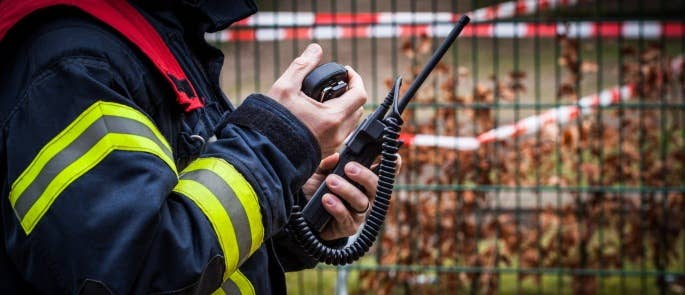
Emergency Arrangements
Under the Confined Spaces Regulations 1997, emergency arrangements must be in place before anyone enters a confined space, and include the following:
- Reduction of risks to anyone carrying out the rescue.
- Resuscitation equipment should be readily available and maintained in efficient working order, where it has been deemed a means of resuscitation is necessary.
- Appropriate steps should be taken to ensure emergency arrangements can be immediately actioned when needed.
- Details of the rescue equipment required, as well as how to raise the alarm to get help (for both those inside and outside the confined space).
- Fire safety arrangements.
- Training requirements for anyone with rescue responsibilities, and the provision of and training in first aid.
Emergency arrangements must cover all risks in the confined space, not just the specified risks, and the ACoP makes it very clear that employers must not rely on public emergency services.
Training
Employers and others in control of work in confined spaces must properly plan for confined space work and ensure that any individuals involved in planning, supervising, monitoring and carrying out the work are competent in their responsibilities. This includes providing the necessary information, instruction and training.
More information on training and selection for work in confined spaces can be found in High Speed Training’s Working in Confined Spaces Training Course.
Permit-to-work systems
A permit-to-work system is usually required where there is a foreseeable risk of serious injury as a result of risks from confined spaces. Permit-to-work systems are not a replacement for written safe systems of work or risk assessments. Instead, they support them.
A permit-to-work provides a method for recording actions required to be followed for the safe entry and work in confined spaces, as well as a record of the essential information on risks and emergency information.
Those completing permit-to-work systems must be competent – they must have the required experience, skills, knowledge and training in the work and work equipment being used to complete the permit-to-work safely.
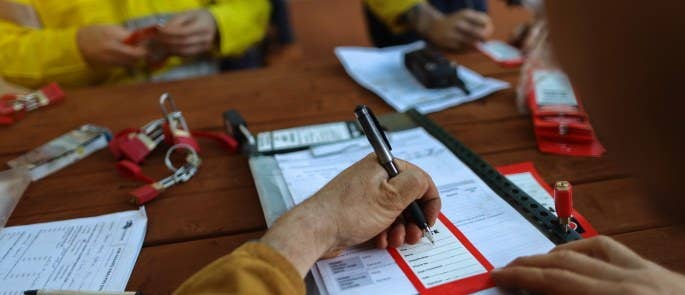
Employee Responsibilities
Under health and safety legislation, employees must;:
- Co-operate with their employer and their employer’s health and safety arrangements to ensure that their responsibilities can be undertaken safely. This includes making safe and effective use of all control measures and safety arrangements. Employees must work in the safe and effective manner in which they have been informed, instructed and trained.
- Take reasonable care of their own health and safety, the health and safety of their colleagues, and that of other people who may be affected by their work activities, for example visitors to the premises.
- Immediately inform their employer of any health and safety concerns posed by a work activity or any shortcomings in the protection arrangements, both before and during the work activity.
For employees to be able to carry out their own responsibilities, their employer must have ensured that they are aware of what they are and how to undertake them competently – as well as ensuring the necessary supervision and monitoring arrangements are in place.
Other Legislation
While we have covered the key pieces of legislation regulating work in confined spaces, it’s important to note that, depending on the work activities or work environment, other regulations may also apply. For example, the Work at Height Regulations 2005, the Personal Protective Equipment Regulations 1992, or the Control of Asbestos Regulations 2012.
This article has provided a brief overview of the legislation regulating confined space working. For more information, or if you are looking to provide training on confined spaces for yourself or your employees, the following course may be suitable for you: Working in Confined Spaces Training Course.
Further Resources:
- Working in Confined Spaces Hazards and Control Measures
- 3 Case Studies of Working in Confined Spaces
- Permit to Work Quiz
- Working in Confined Spaces Training Course


